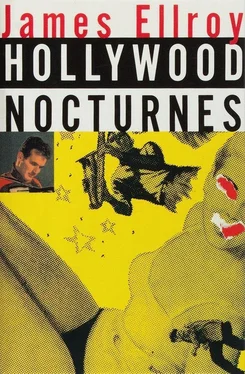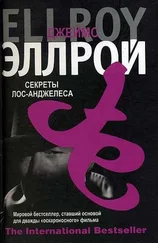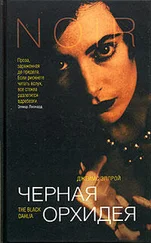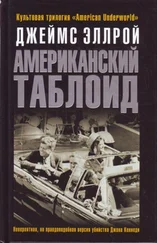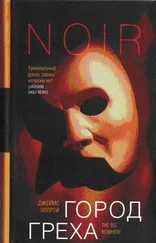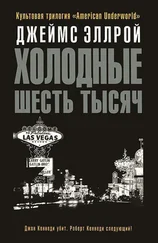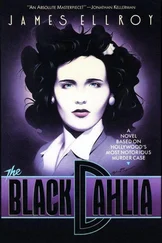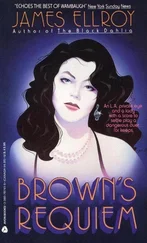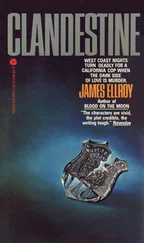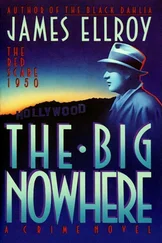James Ellroy
Hollywood Nocturnes
“Out of the Past” copyright © 1994 by James Ellroy. First published in a different form in GQ , November 1993.
“Dick Contino’s Blues” copyright © 1994 by James Ellroy. First published in Granta , December 1994.
“High Darktown” copyright © 1986 by James Ellroy. First published in New Black Mask .
“Dial Axminster 6-400” copyright © 1987 by James Ellroy. First published in New Black Mask .
“Since I Don’t Have You” copyright © 1988 by James Ellroy. First published in New Black Mask .
“Gravy Train” copyright © 1990 by James Ellroy. First published in The Armchair Detective .
“Torch Number” copyright © 1990 by James Ellroy. First published in Justice for Hire , edited by Robert J. Randisi (Mysterious Press, 1990).
A man gyrating with an accordion — pumping his “Stomach Steinway” for all its worth.
My father pointing to the TV. “That guy’s no good. He’s a draft dodger.”
The accordion man in a grade Z movie: clinching with the blonde from the Mark C. Bloome tire ads.
Half-buried memories speak to me. Their origin remains fixed: L.A., my hometown, in the ’50s. Most are just brief synaptic blips, soon mentally discarded. A few transmogrify into fiction: I sense their dramatic potential and exploit it in my novels, memory to moonshine in a hot second.
Memory: that place where personal recollections collide with history.
Memory: a symbiotic melding of THEN and NOW. For me, the spark point of harrowing curiosities.
The accordion man is named Dick Contino.
“Draft Dodger” is a bum rap — he served honorably during the Korean War.
The Grade Z flick is Daddy-O — a music/hot rod/romance stinkeroo.
Memory is contextual: the juxtaposition of large events and snappy minutiae.
In June of 1958 my mother was murdered. The killing went unsolved; I went to live with my father. I saw Dick Contino belt “Bumble Boogie” on TV, noted my father’s opinion of him and caught Daddy-O at the Admiral Theatre a year or so later. Synapses snapped, crackled, popped; a memory was formed and placed in context. Its historical perspective loomed dark: women were strangled and spent eternity unavenged.
I was ten and eleven years old then; literary instincts simmered inchoately in me. My curiosities centered on crime: I wanted to know the WHY? behind hellish events. As time passed, contemporaneous malfeasance left me bored — the sanguinary ’60s and ’70s passed in a blur. My imagination zoomed back to the decade preceding them, accompanied by a period soundtrack: golden oldies, Dick Contino slamming the accordion on the “Ed Sullivan Show.”
In 1965 I got kicked out of high school and joined the Army. Everything about the Army scared me shitless — I faked a nervous breakdown and glommed an unsuitability discharge.
In 1980 I wrote Clandestine — a thinly disguised, chronologically altered account of my mother’s murder. The novel is set in 1951; the hero is a young cop — and draft dodger — whose life is derailed by the Red Scare.
In 1987 I wrote The Big Nowhere . Set in 1950, the book details an Anti-Communist pogrom levelled at the entertainment biz.
In 1990 I wrote White Jazz . A major sub-plot features a grade Z movie being filmed on the same Griffith Park locales as Daddy-O .
Jung wrote: “What is not brought to consciousness comes to us as fate.”
I should have seen Dick Contino coming a long time ago.
I didn’t. Fate intervened, via photograph and video cassette.
A friend shot me the photo. Dig: it’s me, age ten, on June 22, 1958. An L.A. Times photographer snapped the pic five minutes after a police detective told me that my mother had been murdered. I’m in minor-league shock: my eyes are wide, but my gaze is blank. My fly is at half mast; my hands look shaky. The day was hot: the melting Brylcream in my hair picks up flashbulb light.
The photo held me transfixed; its force transcended my many attempts to exploit my past for book sales. An underlying truth zapped me: my bereavement, even in that moment, was ambiguous. I’m already calculating potential advantages, regrouping as the officious men surrounding me defer to the perceived grief of a little boy.
I had the photograph framed, and spent a good deal of time staring at it. Spark point: late ’50s memories re-ignited. I saw Daddy-O listed in a video catalog and ordered it. It arrived a week later; I popped it in the VCR.
Fuel-injected zoooom—
The story revolves around truck driver/drag racer/singer Phil “Daddy-O” Sandifer’s attempts to solve the murder of his best friend, while laboring under the weight of a suspended driver’s license. Phil’s pals “Peg” and “Duke” want to help, but they’re ineffectual — addled by too many late nights at the Rainbow Gardens — a post-teen-age doo wop spot where Phil croons for gratis on request. No matter: Daddy-O meets slinky Jana Ryan, a rich girl with a valid driver’s license and a ’57 T-Bird ragtop. Mutual resentment segues into a sex vibe; Phil and Jana team up and infiltrate a nightclub owned by sinister fat man Sidney Chillis. Singer Daddy-O, cigarette girl Jana: a comely and unstoppable duo. They quickly surmise that Chillis is pushing Big ‘H’, entrap him and nail the ectomorph for the murder of Phil’s best friend. A hot rod finale; a burning question left unanswered: will Daddy-O’s derring-do get him his driver’s license back?
Who knows?
Who cares?
It took me three viewings to get the plot down anyway.
Because Dick Contino held me spellbound.
Because I knew — instinctively — that he held important answers.
Because I knew that he hovered elliptically in my “L.A. Quartet” novels, a phantom waiting to speak.
Because I sensed that he could powerfully spritz narrative detail and fill up holes in my memory, bringing Los Angeles in the late ’50s into some sort of hyper-focus.
Because I thought I detected a significant mingling of his circa ’57 on-and-off-screen personas, a brew that thirty-odd intervening years would forcefully embellish.
Contino on-screen: a handsome Italian guy, late twenties, big biceps from weights or making love to his accordion. Dreamboat attributes: shiny teeth, dark curly hair, engaging smile. It’s the ’50s so he’s working at a sartorial deficit: pegger slacks hiked up to his pecs, horizontal-striped Ban-Lon shirts. He looks good and he can sing; he’s straining on “Rock Candy Baby” — the lyrics suck and you can tell this up-tempo rebop isn’t his style — but he croons the wah-wah ballad “Angel Act” achingly, full of baritone tremolos — quintessentially the pussy-whipped loser in lust with the “noir” goddess who’s out to trash his life.
And he can act: he’s an obvious natural, at ease with the camera. Dig: atrocious lines get upgraded to mediocre every time he opens his mouth.
And he’s grateful to be top-lining Daddy-O — he doesn’t condescend to the script, his fellow performers or lyrics like, “Rock Candy Baby, that’s what I call my chick! Rock Candy Baby, sweeter than a licorice stick!” — even though my threadbare knowledge of his life tells me that he’s already been to much higher places.
I decided to find Dick Contino.
I prayed for him to be alive and well.
I located a half dozen of his albums and listened to them, reveling in pure Entertainment .
“Live at the Fabulous Flamingo,” “Squeeze Me,” “Something for the Girls” — old standards arranged to spotlight accordion virtuosity. Main theme bombardments; sentiment so pure and timeless that it could soundtrack every moment of transcendent schmaltz that Hollywood has ever produced. Dick Contino, showstopper on wax: zapping two keyboards, improvising cadenzas, shaking thunderstorms from bellows compression. Going from whisper to sigh to roar and back again in the length of time it takes to think: tell me what this man’s life means and how it connects to my life.
Читать дальше
